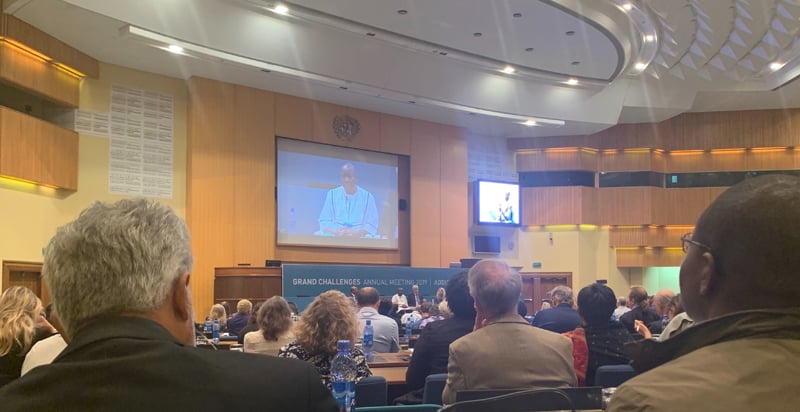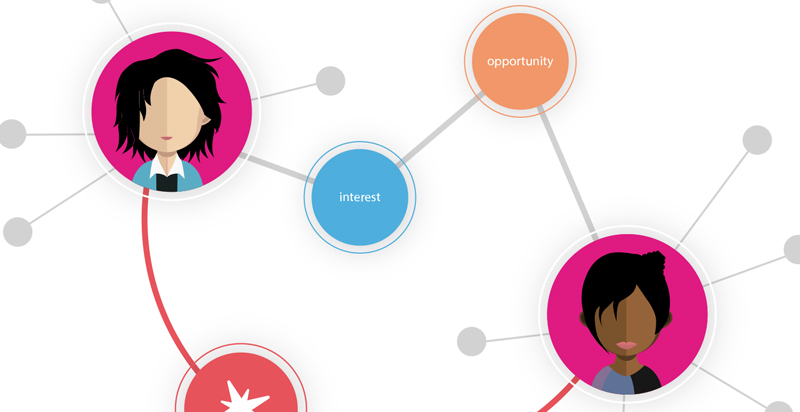Innovation relies on new perspective. We’ve found there are two ways to get that: collaboration and data. Either one can free our attention from the daily productivity push and spur an innovation.
Read More »Blog

Mike Perez
Recent Posts
Making Service-Oriented Architecture Serve Data Applications
Bloor Group CEO Eric Kavanagh chatted with David King, CEO and founder of Exaptive recently. Their discussion looked at the ways in which service-oriented architecture (SOA) has and has not fulfilled it's promise, especially as it applies to working with data. Take a listen or read the transcript.
Read More »The Best Innovation Management Software Translates Between Teams
We’re all familiar with the way knowledge is siloed by organizational structures and the momentum of daily work. Cross-pollination is key to innovation, but it goes against the current. So it’s hard, and the serendipity of chance conversations at the water cooler or a conference happy-hour often determines if it happens.
Read More »The Best Innovation Management Software Captures the Context of Ideas
Most innovation management software (a.k.a. innovation software) is focused on generating and curating ideas. Ideas are explicit. They’ve been articulated, inside your head at the very least. Implicit knowledge, the context of an idea, is where many big opportunities reside.
Read More »Innovation Management Software for Interdisciplinary Communities
It’s hard to create effective interdisciplinary teams or facilitate useful interdisciplinary exchanges. Research grants are increasingly calling for interdisciplinary collaboration as a requirement for funding. Interdisciplinary endeavors are popping up in academic settings and research foundations. Interdisciplinarity is a necessity for solving complex problems. But executing interdisciplinary collaboration is easier said than done.
Read More »The Best Innovation Management Software for Complex Problems
Some problems are complicated. Finding a solution requires expertise and analysis, but the solution exists. Sky scrapers are complicated. Some problems are complex or even wicked. These problems have no solution. They’re too big, too slippery, too thorny.
Read More »What is a Data Application?
There are data visualizations. There are web applications. If they had a baby, you'd get a data application.
Data applications are a big part of where our data-driven world is headed. They're how data science gets operationalized. They are how end-users - whether they're subject matter experts, business decision makers, or consumers - interact with data, big and small. We all use a data application when we book a flight, for instance.
Read More »Finding Abstractions that Give Data Applications 'Flight'
Continuing with our recent theme of abstraction in data applications, Dave King gave a talk last month explaining his design principles for "Making Code Sing: Finding the Right Abstractions." Nailing the best abstractions is a quintessential software challenge. We strive for generality, flexibility, and reuse, but we are often forced to compromise in order to get the details right for one particular use case. We end up with projects that we know have amazing potential for use in other applications but are too hardcoded to make repurposing easy. It’s frustrating to see the possibilities locked away, just out of reach.
Read More »Communicating Data Science: How to Captivate a Noncaptive Audience
When communicating about your latest data science project, whether verbally or in writing, your audience often needs to know the takeaway right away, or you’ll lose their attention. This is especially the case if your audience includes colleagues, conference attendees, or readers from outside your field. In an earlier post on communicating data science, I dove into how the elements of story can hold your audience’s attention through a dense presentation. This post introduces (and applies) some tried and true approaches for introducing the end of your story at the beginning. You’ll capture the attention of those for whom your point is valuable and have their attention for your story, and the rest of the audience doesn’t matter.
Read More »Communicating Data Science with 'Story'
Getting your audience’s attention, keeping it, and persuading listeners of your point are all hard to do in a world where most listeners start out thinking, and feeling, “I’ve got my own scheisse to do.” John Weathington’s recent post in Tech Republic, “Be the Hemingway of Data Science Storytelling,” makes the point that presenting data, which can be dry, is more effective if it incorporates elements of story – a protagonist, a journey with challenges, and a conclusion. Jeff Leek’s “The Elements of Data Analytic Style” has a chapter about presenting data that emphasizes story as the method for communicating results.
Read More »Recent Posts
Posts by Author
- AIBS BioScience Talks (1)
- Alanna Riederer (1)
- Austin Schwinn (2)
- Clive Higgins (3)
- Dave King (7)
- Derek Grape (2)
- Dr. Alicia Knoedler (2)
- Frank D. Evans (4)
- Jeff Johnston (1)
- Jill Macchiaverna (9)
- Josh Southerland (1)
- Ken Goulding (1)
- Luke Tucker (3)
- Matt Coatney (3)
- Matthew Schroyer (4)
- Mike Perez (10)
- Sandeep Sikka (1)
- Shannan Callies (2)
- Stephen Arra (1)
- Terri Gilbert (2)
- Tom Lambert (2)
Posts by Tag
- Innovation (19)
- collaboration (19)
- team building (17)
- Data Applications (15)
- Data Science (14)
- collaborate (13)
- new idea (13)
- Data Visualization (12)
- cognitive city (11)
- cognitive network (11)
- teambuilding (11)
- discovery (10)
- thought leadership (10)
- Exaptation (9)
- research (9)
- technology (8)
- Data Exploration (7)
- Platforms (7)
- Data + Creativity (6)
- Text Analysis (6)
- open data (6)
- software (6)
- tech (6)
- Big Data (5)
- Network Analysis (5)
- conference (5)
- ethnographics (5)
- human-computer interaction (5)
- innovation software (5)
- network diagrams (5)
- Communicating About Data (4)
- Dataflow Programming (4)
- Design (4)
- HCI (4)
- Platform (4)
- Rapid Application Development (4)
- artifact (4)
- co-production (4)
- innovation management software (4)
- startup (4)
- use case (4)
- women in tech (4)
- attribute (3)
- entrepreneurship (3)
- ethnographic (3)
- ethnography (3)
- Abstraction (2)
- Data-driven Decision Making (2)
- Machine Learning (2)
- PubMed® Explorer (2)
- User Interface (2)
- algorithm (2)
- entrepreneur (2)
- 3d Visualization (1)
- Financial (1)
- Netflix (1)
- building models (1)
- hackathon (1)
- hairballs (1)
- interdisciplinary (1)
- knowledge graph (1)









